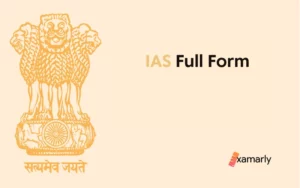Aspirants can choose their chosen optional subject in one of the most renowned exams in the nation, the UPSC. For the civil services mains test, the UPSC offers zoology as an elective subject. It is the most popular optional subject among life science students who want to take the UPSC exam. Only those with a background in the life sciences or who are doctors are recommended to study zoology as an optional subject because it is a specialist branch of science.
Read it further to know the zoology optional syllabus for UPSC, booklist, preparation tips, and the queries related to it. This article will give you deep insight into this subject for the UPSC exam.
Zoology Optional Syllabus For UPSC
UPSC Zoology Optional Syllabus For Paper I
1. Non-chordata and Chordata:
(a) Classification and relationship of various phyla up to subclasses: Acoelomate and Coelomate, Protostomes and Deuterostomes, Bilateria and Radiata; Status of Protista, Parazoa, Onychophora and Hemichordata; Symmetry.
(b) Protozoa: Locomotion, nutrition, reproduction, sex; General features and life history of Paramaecium, Monocystis, Plasmodium and Leishmania.
(c) Porifera: Skeleton, canal system and reproduction.
(d) Cnidaria: Polymorphism, defensive structures and their mechanism; coral reefs and their formation; metagenesis; general features and life history of Obelia and Aurelia.
(e) Platyhelminthes: Parasitic adaptation; general features and life history of Fasciola and Taenia and their pathogenic symptoms.
(f) Nemathelminthes: General features, life history, parasitic adaptation of Ascaris and Wuchereria.
(g) Annelida: Coelom and metamerism; modes of life in polychaetes; general features and life history of Nereis, earthworm and leach.
(h) Arthropoda: Larval forms and parasitism in Crustacea; vision and respiration in arthropods (Prawn, cockroach and scorpion); modification of mouth parts in insects (cockroach, mosquito, housefly, honey bee and butterfly); metamorphosis in insect and its hormonal regulation, social behaviour of Apis and termites.
(i) Mollusca: Feeding, respiration, locomotion, general features and life history of Lamellidens, Pila and Sepia, torsion and detorsion in gastropods.
(j) Echinodermata: Feeding, respiration, locomotion, larval forms, general features and life history of Asterias.
(k) Protochordata: Origin of chordates; general features and life history of Branchiostoma and Herdmania.
(l) Pisces: Respiration, locomotion and migration.
(m) Amphibia: Origin of tetrapods, parental care, paedomorphosis.
(n) Reptilia; Origin of reptiles, skull types, status of Sphenodon and crocodiles.
(o) Aves: Origin of birds, flight adaptation, migration.
(p) Mammalia: Origin of mammals, dentition, general features of egg laying mammals, pouched-mammals, aquatic mammals and primates, endocrine glands (pituitary, thyroid, parathyroid, adrenal, pancreas, gonads) and their interrelationships.
(q) Comparative functional anatomy of various systems of vertebrates (integument and its derivatives, endoskeleton, locomotory organs, digestive system, respiratory system, circulatory system including heart and aortic arches, urino-genital system, brain and sense organs (eye and ear).
2. Ecology:
(a) Biosphere: Concept of biosphere; biomes, Biogeochemical cycles, Human induced changes in atmosphere including green house effect, ecological succession, biomes and ecotones, community ecology.
(b) Concept of ecosystem; structure and function of ecosystem, types of ecosystem, ecological succession, ecological adaptation.
(c) Population; characteristics, population dynamics, population stabilization.
(d) Biodiversity and diversity conservation of natural resources.
(e) Wildlife of India.
(f) Remote sensing for sustainable development.
(g) Environmental biodegradation, pollution and its impact on biosphere and its prevention.
3. Ethology:
(a) Behaviour: Sensory filtering, reponsiveness, sign stimuli, learning and memory, instinct, habituation, conditioning, imprinting.
(b) Role of hormones in drive; role of pheromones in alarm spreading; crypsis, predator detection, predator tactics, social hierarchies in primates, social organization in insects.
(c) Orientation, navigation, homing, biological rhythms, biological clock, tidal, seasonal and circadian rhythms.
(d) Methods of studying animal behaviour including sexual conflict, selfishness, kinship and altruism.
4. Economic Zoology:
(a) Apiculture, sericulture, lac culture, carp culture, pearl culture, prawn culture, vermiculture.
(b) Major infectious and communicable diseases (malaria, filaria, tuberculosis, cholera and AIDS) their vectors, pathogens and prevention.
(c) Cattle and livestock diseases, their pathogen (helminthes) and vectors (ticks, mites, Tabanus, Stomoxys).
(d) Pests of sugar cane (Pyrilla perpusiella) oil seed (Achaea janata) and rice (Sitophilus oryzae).
(e) Transgenic animals.
(f) Medical biotechnology, human genetic disease and genetic counselling, gene therapy.
(g) Forensic biotechnology.
5. Biostatistics:
Designing of experiments; null hypothesis; correlation, regression, distribution and measure of central tendency, chi-square, student-test, F-test (one-way & two-way F-test).
6. Instrumentation Methods:
(a) Spectrophotometer, phase contrast and fluorescence microscopy, radioactive tracer, ultra centrifuge, gel electrophoresis, PCR, ELISA, FISH and chromosome painting.
(b) Electron microscopy (TEM, SEM).
UPSC Zoology Optional Syllabus For Paper II
1. Cell Biology:
(a) Structure and function of cell and its organelles (nucleus, plasma membrane, mitochondria, Golgi bodies, endoplasmic reticulum, ribosomes, and lysosomes), cell division (mitosis and meiosis), mitotic spindle and mitotic apparatus, chromosome movements, chromosome type polytene and lambrush, organization of chromatin, heterochromatin, Cell cycle regulation.
(b) Nucleic acid topology, DNA motif, DNA replication, transcription, RNA processing, translation, protein foldings and transport.
2. Genetics:
(a) Modern concept of gene, split gene, genetic regulation, genetic code.
(b) Sex chromosomes and their evolution, sex determination in Drosophila and man.
(c) Mendel?s laws of inheritance, recombination, linkage, multiple alleles, genetics of blood groups, pedigree analysis, hereditary diseases in man.
(d) Mutations and mutagenesis.
(e) Recombinant DNA technology; plasmid, cosmid, artificial chromosomes as vectors, transgenic, DNA cloning and whole animal cloning (principles and methods).
(f) Gene regulation and expression in prokaryotes and eukaryotes.
(g) Signal molecules, cell death, defects in signaling pathway and consequences.
(h) RFLP, RAPD and AFLP and application of RFLP in DNA finger printing, ribozyme technologies, human genome project, genomics and protomics.
3. Evolution:
(a) Theories of origin of life.
(b) Theories of evolution; Natural selection, role of mutations in evolution, evolutionary patterns, molecular drive, mimicry, variation, isolation and speciation.
(c) Evolution of horse, elephant and man using fossil data.
(d) Hardy-Weinberg Law.
(e) Continental drift and distribution of animals.
4. Systematic:
Zoological nomenclature, international code, cladistics, molecular taxonomy and biodiversity.
5. Biochemistry:
(a) Structure and role of carbohydrates, fats, fatty acids and cholesterol, proteins and amino-acids, nucleic acids. Bioenergetics.
b) Glycolysis and Kreb cycle, oxidation and reduction, oxidative phosphorylation, energy conservation and release, ATP cycle, cyclic AMP, its structure and role.
(c) Hormone classification (steroid and peptide hormones), biosynthesis and functions.
(d) Enzymes: types and mechanisms of action.
(e) Vitamins and co-enzymes
(f) Immunoglobulin and immunity.
6. Physiology (with special reference to mammals):
(a) Composition and constituents of blood; blood groups and Rh factor in man, factors and mechanism of coagulation, iron metabolism, acid-base balance, thermo-regulation, anticoagulants.
(b) Haemoglobin: Composition, types and role in transport of oxygen and carbon dioxide.
(c) Digestion and absorption: Role of salivary glands, liver, pancreas and intestinal glands.
(d) Excretion: nephron and regulation of urine formation; osmo-regulation and excretory product
(e) Muscles: Types, mechanism of contraction of skeletal muscles, effects of exercise on muscles.
(f) Neuron: nerve impulse ? its conduction and synaptic transmission, neurotransmitters.
(g) Vision, hearing and olfaction in man.
(h) Physiology of reproduction, puberty and menopause in human.
7. Developmental Biology:
(a) Gametogenesis; spermatogenesis, composition of semen, in vitro and in vivo capacitation of mammalian sperm, Oogenesis, totipotency; fertilization, morphogenesis and morphogen, blastogenesis, establishment of body axes formation, fate map, gestulation in frog and chick; genes in development in chick, homeotic genes, development of eye and heart, placenta in mammals.
(b) Cell lineage, cell-to cell interaction, Genetic and induced teratogenesis, role of thyroxine in control of metamorphosis in amphibia, paedogenesis and neoteny, cell death, aging.
(c) Developmental genes in man, in vitro fertilization and embryo transfer, cloning.
(d) Stem cells: Sources, types and their use in human welfare.
(e) Biogenetic law.
Zoology Optional UPSC Syllabus: Preparation Tips
If studied with a positive mindset, the zoology optional syllabus for UPSC can be covered well. The majority of zoology topics are simple to understand. Tips to prepare for the zoology optional syllabus for UPSC are enlisted below:
- It is necessary to fully comprehend the UPSC zoology optional syllabus as the primary step in order to ace this exam on the first go.
- Check out the UPSC previous year’s question papers before the exam so you can thoroughly comprehend them.
- The next step is to go through the books or study materials to prepare. It would aid in the development of a solid foundation for the areas covered in the UPSC zoology optional curriculum.
- Diagrams must be practiced because they are crucial to understanding this topic. Devote as much time as you can to practice.
Books
Similar to many other optional topics, zoology is not very well-liked. However, those studying the life sciences enjoy this subject. Since the majority of the questions in the zoology optional exams are simple, consulting the right resources might be highly beneficial for getting good grades. All that is required to pass exams is to refer to your books. All important topics necessary for the exam are covered in the zoology optional books for IAS/UPSC. The following are some of the finest zoology optional UPSC books you may use as references:
- Economic Zoology – Shukla and Upadhaya, Kotpal Series, Kotpal- Khetrapal – Agarwal
- General Zoology – Storer and Usurger
- Modern Textbook Of Zoology Vertebrates – RL Kotpal
- Modern Textbook of Zoology: Invertebrates – RL Kotpal
- Organic evolution – Veer Bala Rastogi
- Cell and Molecular Biology – De Robertis
- Ethology – Reena Mathur, Magazines like Science Reporter, Nature etc.
- Physiology – H.R. Singh
- Animal Behaviour by Reena Mathur
- Animal physiology – H.R. Singh, Vander
Conclusion
The UPSC Zoology OPtional Syllabus is quite specialized because it includes the cytology, genetics, ecology, and classification of every species. This optional subject’s elements are all connected to theoretical and applied zoology.
Before taking the exam, candidates who selected zoology as an optional subject should familiarise themselves with the Zoology optional syllabus. The zoology optional will consist of two papers for a total of 500 marks, with questions drawn from the UPSC zoology syllabus. Therefore, achieving high marks in this topic will significantly help candidates move up the ladder.
FAQs
Who Got The Highest Marks In Zoology Optional?
Pooja Yadav scored 325 marks in UPSC 2018 and got AIR 174. Therefore, if you are prepared to handle the extensive Zoology syllabus, neither score nor rank is beyond your realm of possibility.
Which Is Better Optional Zoology Or Anthropology?
Zoology is an extremely broad field that takes a lot of time to study. Comparatively speaking, anthropology is simple and easy to grasp. Zoology can be chosen by doctors or by the graduates of the life science field as it is the study of animals. While anthropology can be chosen by any science background as it contains the ideologies of science also. Basically, this subject involves the study of all aspects of humans.
How Is Zoology As Optional For IAS?
For the UPSC mains exam, zoology is a reasonably common choice among students studying life sciences. As a science subject, zoology has a significant chance of receiving good marks on the optional exams. Since it is static in nature, the questions are also pretty straightforward. Besides this, fewer people opt for this subject, so there is less competition.






